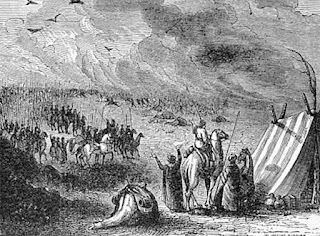This is a list of the most important Egyptian artifacts not the property of Egypt's Supreme Council of Antiquities. Though there are certainly more contenders for the list including perhaps the gold headdress of a wife of Thutmosis III in New York's Metropolitan Museum of Art or the Norbert Schimmel talatats from that same institution.
1. Rosetta Stone (
EA 24) - Discovered in the foundations of a fort at Rosetta by Napoleon's men in 1798 the stone was handed over to the British in the treaty of Alexandria in 1801. The stone was given to king George III who in turn donated it to the British Museum.
2. Calcite Sarcophagus of Seti I - Collected by Giovanni Belzoni the sarcophagus was rejected by Trustees of the British Museum, and ended up as the star attraction in the
Soane Museum, London.
3. Silver cult Statue of Horus the Elder - Discovered in a Cairo antique shop by Howard Carter in April of 1922 the 36.6-pound solid silver statue was probably the very statue used in temple ceremonies, and at that a sole survivor from ancient Egypt. The statue is now in the
Miho Museum Shigaraki, Japan.
An Unknown case for repatriation to Egypt.
4. Limestone bust of Nefertiti - Discovered by archaeologists at Tel el Amarna in December of 1912 its acquisition for Berlin through the division of finds is perhaps the most controversial decision made by representatives of Egypt's antiquity authorities. The bust is currently in Berlin's
Neues Museum.
A case for repatriation to Egypt.
5. The Sarcophagus of Ramses III (
Louvre D1=N337), its lid in the Fitzwilliam (
E.1.1823). The box was collected by showman Giovanni Belzoni in 1816 for the collection of British Consul-General Henry Salt and was acquired for the collection of the Louvre in the early 1820's.
6. Sarcophagus of Nectanebo II (
EA 10) - Discovered being used as a ritual bath in the courtyard of a mosque by Napoleon's men, it was transferred to the British in the treaty of Alexandria in 1801. The sarcophagus is at present in the British museum.
7. Walls from the hall of beauties, tomb of Seti I - Sawed from the walls of Seti's tomb in the Valley of the Kings by the Champollion and Rosellini expedition of the late 1820's. The doorjambs are respectively in the
Louvre and Turin Museums.
8. The Denderah Zodiac - The zodiac is from the little temple on the roof of the temple of Hathor at Denderah. The temple was badly damaged by the zodiacs removal in 1820 and is now in the
Louvre.
9. A bronze bust of Middle Kingdom pharaoh Amenemhet III - A collection of Middle Kingdom bronzes came to light some years ago with the best pieces including the bust of the king ending up in the
George Ortiz collection in Switzerland as provenance unknown.
A case for repatriation to Egypt.
10. The Berlin green head - Truly a great masterpiece of portrait sculpture in the round, unfortunately, Berlin's head has no notable provenance, the piece being given to the museum by benefactor James Simon.
An unknown case for repatriation to Egypt.





 This article is on the Rosetta stone and Egypt's Secretary general of the Supreme Council of Antiquities desire to have it back not as a loan but permanent. In recent weeks Dr. Zahi Hawass has become less diplomatic with not only the British Museum but also Berlin's Neues Museum over a bust of an Amarna queen and the MuseLouvre over frescoes now returned, though Dr. Hawass still expects the Louvre to give back to Egypt the Denderah Zodiac.
This article is on the Rosetta stone and Egypt's Secretary general of the Supreme Council of Antiquities desire to have it back not as a loan but permanent. In recent weeks Dr. Zahi Hawass has become less diplomatic with not only the British Museum but also Berlin's Neues Museum over a bust of an Amarna queen and the MuseLouvre over frescoes now returned, though Dr. Hawass still expects the Louvre to give back to Egypt the Denderah Zodiac.

